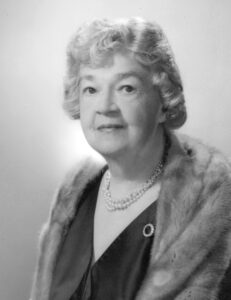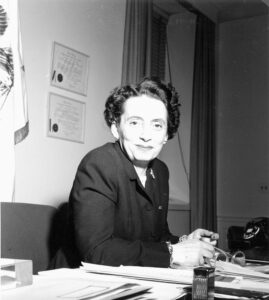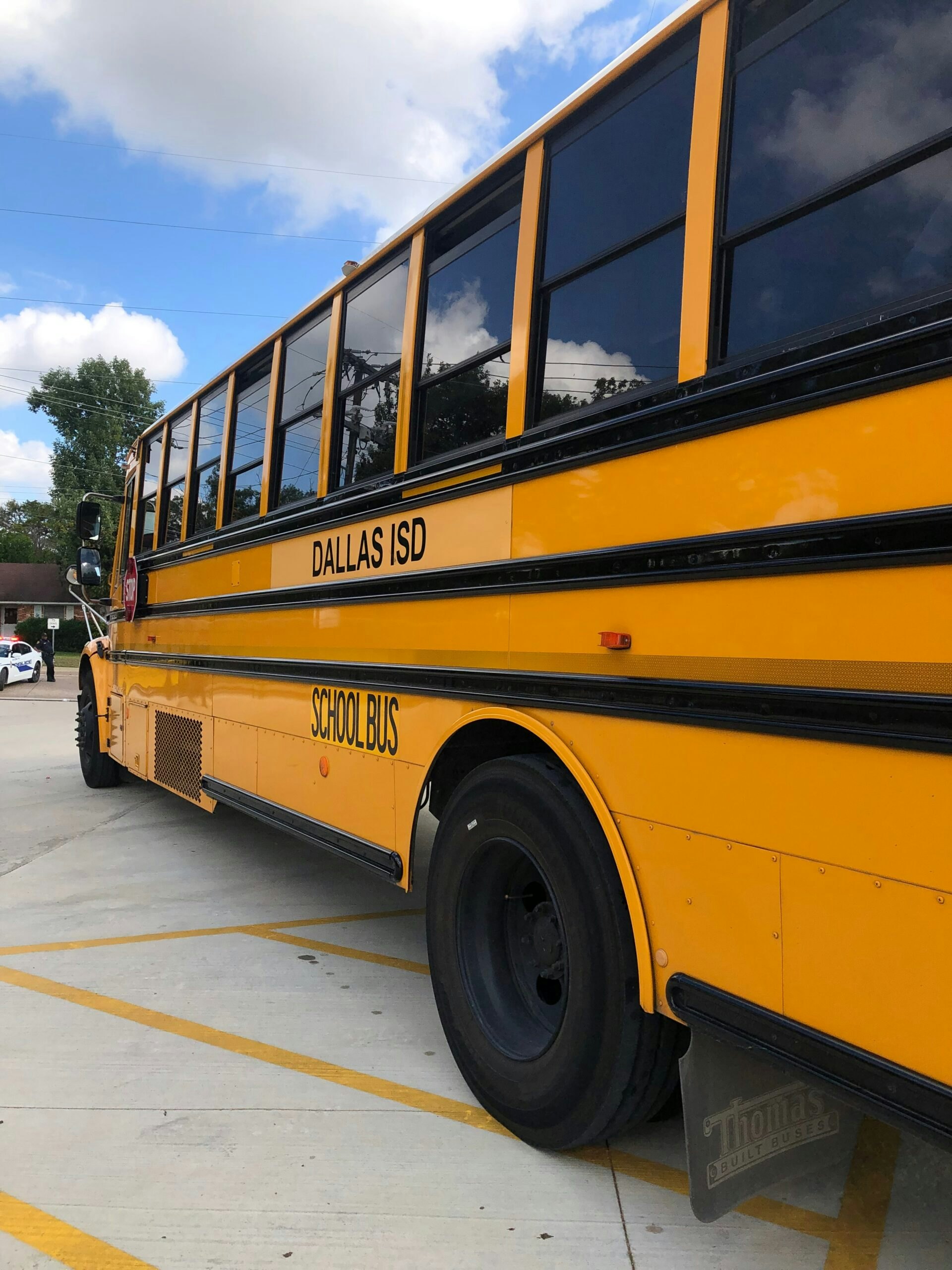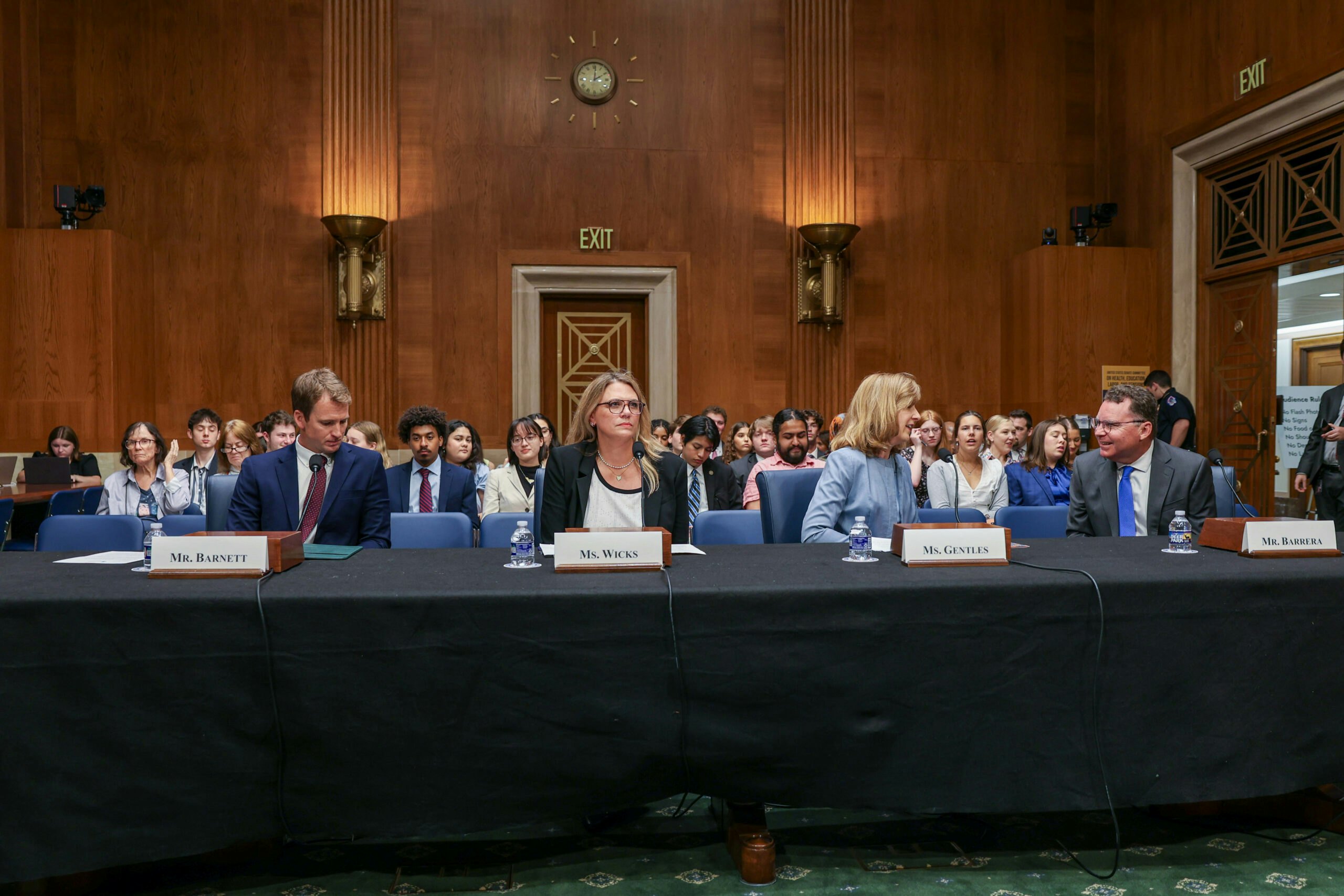Part III: Raising up the world’s best educated workforce through postsecondary education
“These men talk of wanting some education.”
Anna Rosenberg to President Franklin D. Roosevelt, reporting on conversations with GIs in France, 1944
In 1944 and 1945, America’s leaders committed to the largest expansion of college access in history: the GI Bill. This decision, along with subsequent decisions to refine this initial commitment, put the United States on a path to building the best-educated workforce in the world and helped lay the foundation for America’s strong economic outperformance in the postwar era.
This essay is the third in a six-part George W. Bush Institute-SMU Economic Growth Initiative series on how America’s distinctive model for innovation and economic growth came to be. The GI Bill represented a bold break with all past education policies as well as past veteran benefit measures. It transformed America’s economy and society by radically changing how Americans thought about higher education – and in ways that lasted long after the final World War II veteran’s college graduation.
The GI Bill, formally known as the Servicemen’s Readjustment Act of 1944, and later measures helped the American people become better prepared than peers in any other country for the knowledge-centric economy of the late 20th and early 21st centuries. Mass higher education helped America attain faster technology adoption, broader opportunity, and higher incomes than peer nations. Today America’s colleges need modernization, but they remain a central pillar of U.S. prosperity.
Higher education in America before 1944
Few Americans attended college before World War II. Only 7% of young adults had college degrees in 1940, up from 3% in 1910, based on calculations from U.S. Department of Education data. Fewer than 1% of people attended junior colleges, as they were called then.
American higher education was in some ways poised for growth by 1940. The nation’s high schools, built by local communities across the country with little federal help, had increased enrollment to more than 70% of high school-age Americans by 1949, from just 18% in 1910, according to federal statistics and works including Claudia Goldin and Lawrence F. Katz’s The Race Between Education and Technology and Roger L. Geiger’s, American Higher Education Since World War II: A History. Virtually all of today’s flagship public universities were in existence by 1900 – a result of visionary legislation like the Morrill Land-Grant College Act of 1862 – and had grown significantly by 1940.
But several hurdles stood in the way of expanding college participation. Most important was cost. Virtually no institutions had well-functioning tuition assistance programs. Tuition in 1940 amounted to about a third of the median household’s income and was beyond reach for all but the wealthiest 10% to 20% of families. In addition, few Americans thought of college education as relevant outside a handful of professions like medicine, law, and teaching. If anything, it came to seem less useful as high schools introduced more career-focused classes like stenography, bookkeeping, and animal husbandry.
President Franklin D. Roosevelt’s administration did nothing to change people’s thinking or make college more affordable. FDR’s first higher education commissioner resigned within a year, citing the administration’s lack of interest in his proposals. University leaders, meanwhile, were ambivalent about further growth. While some state university presidents welcomed it in principle, presidents of elite private universities were mostly skeptical about whether it made sense to broaden access.
When Congress was considering the GI Bill in 1944, leaders like Harvard President James Conant and University of Chicago President Robert Maynard Hutchins actively opposed it. Hutchins memorably warned that admitting working class veterans would turn top colleges into “educational hobo jungles.”
Veteran benefits before 1944
The history of veterans benefits before World War II is a dismal story. After the Revolutionary War, the Civil War, World War I, and other conflicts, Congress promised modest sums of money and then all too often failed to live up to its promises. In 1932, a self-styled “Bonus Army” of some 30,000 to 40,000 World War I veterans – many of them unemployed – gathered in Washington demanding that Congress pay bonus pensions it had promised. When Congress failed to act, President Herbert Hoover ordered the U.S. Army to assist police in clearing the veterans’ encampment, resulting in the deaths of two protestors.
FDR’s thinking reflected the traditional view that military service was a responsibility of citizenship and so the federal government should not create specific veterans benefit programs, according to Michael Bennett’s book When Dreams Came True: The GI Bill and the Making of Modern America. In 1934 Roosevelt vetoed a measure to expand payments to World War I veterans. (Congress overrode his veto.) After America’s entry into World War II, FDR envisioned at most a small financial benefit for the war’s veterans.
Starting in 1942, the American Legion, the nation’s largest veteran organization with more than a million members, ran a massive lobbying campaign pressing for more generous benefits than the United States had ever provided before. The Legion’s leaders called for including modest educational benefits – the first time that anyone had ever suggested helping veterans attend college as a reward for military service. But they envisioned only a limited provision to help veterans whose college education the war had interrupted to complete their degrees. Their plan would have supported fewer than 5% of veterans.
FDR initially opposed doing as much as the Legion called for. But in the fall of 1943, first lady Eleanor Roosevelt returned from a tour of the Pacific theater and urged her husband to offer more generous benefits, as documented in the Roosevelt family papers. FDR agreed and called on Congress to act.
Two heroines of our story: U.S. Rep. Edith Nourse Rogers and Anna Rosenberg
In 1944, two remarkable women played pivotal roles in changing the course of the GI Bill’s education provisions, with monumental consequences for the nation.
Edith Nourse Rogers first came to Washington in 1913 as the 31-year-old wife of Congressman John Jacob Rogers. During World War I, her prodigious volunteer work with wounded veterans at Walter Reed hospital earned her the nickname “the Angel of Mercy of Walter Reed.” When her husband died of cancer in 1924, she entered the special election for his seat and won a landslide victory. She went on to serve for 35 years, winning every election by lopsided margins and becoming the longest-serving woman in the U.S. House of Representatives until her record was surpassed in 2018.
Rogers, a Republican from Massachusetts, became well respected by colleagues of both parties for her wit and elegance – she always wore a signature orchid on her shoulder – but also for her steely determination and courage. She was the lead sponsor of the first legislation providing federal support for building modern hospitals in underserved parts of the country. She was one of the most forceful voices in Congress warning of the threat posed by Nazi Germany and calling for aggressive rearmament. In 1939, she co-sponsored the only serious legislative initiative to admit Jewish victims of Nazi persecution to the United States, which failed due to opposition from anti-immigrant hardliners in Congress and the Roosevelt White House’s indifference.
As the ranking minority leader of the House Committee on Veterans’ Affairs, Rogers became co-lead sponsor of the GI Bill in early 1944 alongside the committee chairman, John Rankin, a Democrat from Mississippi and a notorious racist. As the proposal made its way through the legislative process, Rankin turned against his own bill because certain amendments promised what he viewed as excessive unemployment benefits for Black veterans. Rogers took charge, earning her reputation as the GI Bill’s most important author. She expanded eligibility for the bill’s education benefits; defeated conservatives who didn’t want to spend so much money and liberals who didn’t like veteran-specific programs; won over skeptical university presidents; and even overcame the opposition of the U.S. Army, which wanted a narrower bill. Ultimately she got the bill passed with unanimous support in both houses of Congress. When FDR signed it, he handed Rogers his signing pen.
Anna Rosenberg, meanwhile, immigrated to New York City from Hungary in 1912 at age 13 with her Jewish family. Starting her own public relations firm shortly after high school, she soon represented several of New York’s leading corporations. In 1928, she advised FDR on his New York gubernatorial race, building a close relationship with him in the process. During World War II, Rosenberg became one of FDR’s closest advisors and spent several days a month at the White House. Her wartime contributions included settling a labor dispute at a major war production plant in Buffalo, New York, with an agreement that became the basis for labor relations throughout the war as well as negotiating for better treatment of Black defense workers. For these contributions, President Harry Truman honored her as the first American, male or female, awarded the Medal of Freedom.
Shortly after the Allied invasion of Normandy in June 1944, FDR asked Rosenberg to travel to France, meet with soldiers, and report back to him on their hopes and dreams for postwar life. She immediately set off for Europe, embedded with General George Patton’s Army in France, and visited with countless soldiers. Dressed in combat gear, she came under enemy fire during one battle. FDR insisted on meeting her the day after she returned. To his total surprise, Rosenberg told him that, more than anything, the soldiers she met with hoped for opportunities to get a college education. FDR “lit up,” she later told journalist Diane Sawyer, saying “Yes, that’s what we have to do.” Immediately afterward, FDR joined Rogers in pressing for amendments to the GI Bill that would dramatically expand its education provisions and other benefits.
During 1945, Rosenberg helped convince Truman, General Dwight D. Eisenhower, and other leaders to support expanding the GI Bill. Congress, concerned about slow takeup of the GI Bill’s education benefits, agreed and passed several amendments in December 1945 that turned the GI Bill into the landmark legislation that it became. Provisions sponsored by Rogers extended the period in which veterans could attend college, expanded age eligibility, and eliminated the original bill’s language limiting benefits to veterans whose education had been interrupted by the war. The effect was to make most of America’s 15 million-plus veterans eligible for free or nearly free college.
The GI Bill transforms higher education – and the nation
By 1954, 7.8 million veterans had used GI Bill benefits to attend four-year colleges, two-year colleges, or career training programs, far more than most leaders had anticipated. Veterans performed well on the whole, contrary to predictions that working class GIs would struggle to succeed in rigorous college programs. Harvard President Conant acknowledged he had been wrong, calling his institution’s veterans “the most mature and promising students in the history of Harvard.”
As a share of eligible veterans, Black GIs participated at even higher rates than White GIs did, though they were much fewer in absolute numbers since so few Black veterans had been able to attend high school in the Jim Crow South. Forty percent of eligible women also used GI Bill benefits.
The GI Bill had massive short-term effects on America’s colleges and universities. Total enrollment in postsecondary institutions roughly doubled by the early 1950s relative to prewar levels, according to federal statistics. Colleges shifted in the direction of “practical” courses because so many veterans were older, often married, and impatient to start careers. And colleges had to compete for this vast new student population since the GI Bill empowered veterans to choose programs rather than subsidizing all institutions.
More profound, however, were the GI Bill’s lasting effects on people’s attitudes about postsecondary education. As one historian of the GI Bill put it, “Our fathers … had not gone to college and saw no need for their sons to do so. But when that older boy came back and exchanged his combat boots for white bucks, every mother in the neighborhood began to say, ‘Well, if __ can go to college, my kid can.’”
Between 1946 and 1952, two blue-ribbon commissions considered whether the United States should permanently broaden college access, including for nonveterans. Both concluded that a far larger share of young Americans would benefit from postsecondary education than the 10% who had attended college before the war and that cost was the largest obstacle for students with high aptitude but modest incomes. One commission envisioned a federal financial aid program, a proposal Congress never acted on because the Korean War derailed domestic reform discussions during Truman’s last three years in office.
But the GI Bill had generated irreversible long-term changes. Hundreds of institutions vastly expanded their campuses rather than housing veteran students in temporary facilities and reverting to their prewar scale when GI Bill enrollment receded. States established whole new university systems like the State University of New York or new locations like the University of Illinois at Chicago. Historically Black colleges and universities expanded several times over in the early postwar years. The GI Bill spread the American spirit of innovation more fully throughout America’s higher education sector.
Later leaders double down – and still America’s colleges struggle to keep up with demand
By the mid-1950s, a bipartisan consensus had emerged that the federal government should keep expanding college access. Congress passed a new GI Bill for Korean War veterans – as it would later do for Vietnam War and Post-9/11 veterans. President Eisenhower led the way in expanding scholarships for gifted science students in response to the Soviet Sputnik satellite launch in 1957. President Lyndon B. Johnson presided over passage of the Higher Education Act of 1965, creating federal assistance programs for all qualified students.
In 1960, University of California System President Clark Kerr developed what became known as the California Plan, which systematized the state’s higher education system into three levels: the University of California System for high-aptitude students, the more job skills-focused California State system, and the open enrollment community college system. Most other states followed with similar setups, resulting in a massive expansion of community college capacity and attendance nationwide.
By 1960, 40% of college-aged Americans were enrolled in postsecondary programs, up from 22% in 1950. Enrollment rates reached 49% in 1970 and over 60% by the 1990s. The share of Americans aged 25 to 34 with a postsecondary degree rose to 26% in 1960, 29% in 1970, 32% in 1980, and 36% in 1990, based on data from the National Center for Education Statistics and the Organization for Economic Cooperation and Development (OECD). In 1962 and 1963, private universities like Duke, Emory, SMU, and Wake Forest started admitting Black undergraduates, presaging the end of racial segregation in higher education. Women fully caught up with men in college enrollment and graduation rates in the early 1970s.
Demand for workers with college-level skills rose even more rapidly than colleges could deliver graduates, refuting predictions made in the 1940s and 1960s that the higher education system was producing more graduates than the economy could put to work. (Today’s claims about overproduction of graduates are nothing new.) One piece of evidence was that occupations requiring a two- or four-year degree grew far faster than occupations that required no degree in the second half of the 20th century. Firms that upgraded staff education levels outperformed competitors that did not.
More evidence for rising demand was visible in the college wage premium – the extra income earned by college graduates relative to workers with just a high school diploma. The premium for bachelor’s degree holders rose to 63% in 2000 from 8% in 1949. It’s higher still today. A growing premium meant that demand for graduates from employers expanded even faster than supply. Wage premiums have always varied depending on a graduate’s major, but the share of four-year students choosing in-demand, high-wage fields has steadily increased, reaching about 60% in the 2020s, based on data from the National Center for Education Statistics.
The GI Bill and later measures contributed tremendously to U.S. economic growth from World War II to the early 21st century. The GI Bill itself helped train 450,000 engineers; 360,000 teachers; 180,000 doctors, dentists, and nurses; 150,000 scientists; 240,000 accountants; and more than 2 million skilled tradespeople, according to Department of Veterans Affairs estimates. It made all the difference in opening up opportunities for former Secretary of State Henry Kissinger, Supreme Court Chief Justice William Rehnquist, entertainer Harry Belafonte, and countless other notable Americans.
America pulls far ahead, 1946-1990
Peer nations were much slower to expand college access. This is partly because they started the postwar era with significant disadvantages relative to the United States. Fewer than a quarter of high school-age adolescents were enrolled in school in most European countries on the eve of World War II, compared with more than 70% in America. More rigid class stratifications in European and East Asian peer nations created cultural barriers to mass college enrollment. So did formal systems like charging tuition for public high schools and using national tests to steer students toward job skills programs and away from academic work as soon as age 14 or earlier in Germany and other countries.
Peer nations were also slower to establish publicly funded tuition assistance programs. Western European nations first provided financial aid between the late 1950s (the Netherlands) and 1971 (Germany). Japan started its first program in 1966. The U.K. did create a small veterans education program after the war but limited it to veterans whose education had been interrupted by the conflict. It benefited just 85,000 veterans.
Most peer nations chose to subsidize existing universities directly rather than providing aid that followed the student. This difference, together with public-sector control of universities, meant that higher education systems benefited less from competition than those in America and saw fewer new institutions established in the early postwar decades. Governments generally offered low tuition levels but tightly rationed seats. In France and Italy, universities admitted more students but created overcrowding by failing to build adequate facilities or programs.
As a result, America’s lead in college attainment rates grew sharply over the first 35 years after World War II. The gap between the United States and 10 peer nations in percentages of 25 to 34 year olds with a postsecondary degree expanded until reaching a peak in 1980: 32% in the United States versus an average of 15% in peer countries, based on calculations from OECD data. (Peer nations for this analysis: Belgium, Canada, Denmark, France, Germany, Japan, the Netherlands, Sweden, Switzerland, and the U.K.)
America outperformed all peers throughout the mid to late 20th century in training engineers, accountants, and professionals of all kinds who powered the nation’s economic growth. America’s GDP per worker was at least 10% higher in 2000 than it would have been if the United States had performed in line with peer nations in college attainment levels from 1950 to 2000, based on simple math drawing on studies of the productivity and wages of workers with more versus less education.
America’s world-leading research universities have also helped the country excel at attracting talented science, technology, engineering, and medical (STEM) students from around the world for graduate programs. Many have stayed in the United States and contributed to the economy as inventors, doctors, engineers, and entrepreneurs.
21st century challenges
Peer nations have mostly caught up with the United States in postsecondary attainment today. This is because enrollment and graduation rates rose rapidly in virtually all peer nations from the 1990s to the present while growing more slowly in the United States than in earlier decades. Total postsecondary enrollment fell 3% in the United States from its 2010 peak to 2022, while growing strongly in most other wealthy countries.
America has seen improvement in graduation rates for enrolled students in the 21st century, but not as fast as in peer countries. Shares of 25-to 34-year olds with a postsecondary degree are now lower in the United States than the peer country average, based on OECD data: 51% versus 55%. The United States also performs below average for percentages with a STEM bachelor’s degree and for numeracy among bachelor’s degree holders, based on internationally comparable tests.
Since 1999, China has increased its share of college-age people enrolled in a postsecondary program to over 50% from less than 10%. Chinese universities awarded more than 50,000 Ph.D. degrees in STEM fields in 2022, compared with 34,000 at U.S. universities. While most experts believe U.S. STEM Ph.D. programs are still more rigorous than Chinese programs today, it’s clear that Chinese institutions are gaining fast. Also, some 16% of STEM doctoral students at U.S. universities are Chinese nationals, many of whom will return to China after they graduate.
America’s slow growth in educational attainment during the 21st century – and decline since 2010 – likely has many causes, including shortcomings of K-12 systems in many districts across the country and falling public confidence in the value proposition associated with attending college. School districts should strengthen reading and math instruction, stay committed to strong assessment and accountability systems, and create better pathways from K-12 though postsecondary education to the workforce. American universities need to re-establish public trust by improving program relevance, reducing delivery costs, and reversing trends toward politicization on college campuses.
America’s large edge over peer countries in per capita income levels today partly reflects the significant education advantages it enjoyed around the turn of the century, since people reach their maximum productivity some 20 or more years after they finish their formal education. Likewise, America’s future prosperity will depend heavily on whether it recommits to world-leading educational outcomes today.
In the years after passage of the GI Bill, Edith Nourse Rogers sponsored more than 1,000 bills focused on veterans, making her by far the most important author of America’s veteran policies. Today’s Edith Nourse Rogers STEM Scholarship honors her innovation and commitment to educating America’s veterans. Anna Rosenberg went on to become Assistant Secretary of Defense – one of the highest-ranking women in the Pentagon’s history – and a top informal advisor to Presidents Eisenhower and Johnson. While neither of these women is well known today, they played pivotal roles in reshaping American society.
In their time and ours, preparing and empowering the nation’s people has turned out to be the secret sauce of America’s winning model for innovation and economic growth.





























